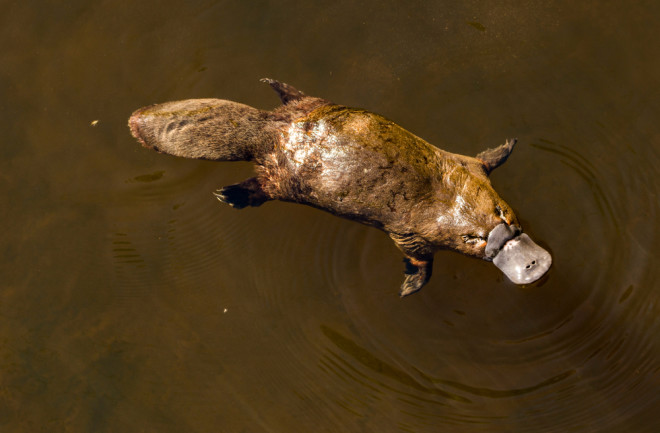In the 1790s, George Shaw faced something of a mystery. As a keeper of the natural history department of the British Museum (which later became the Natural History Museum), Shaw had already spent some time examining samples of exotic wildlife coming from the newly colonized and largely unexplored continent of Australia.
But around 1799, Shaw was presented with a pelt and a drawing of an Australian creature that seemed to be too exotic. Its physical features were so astonishing, he and others initially couldn’t believe what they were seeing. You could hardly blame Shaw for being dubious.
Scientific fraud, then as now, definitely existed, with some hoaxes so outlandish and audacious that it’s hard to imagine they ever fooled anyone (although many of them did, and for years). Now, here was somebody from a land on the other side of the world submitting a new take on the legendary chimera, an animal composed of distinct parts of other animals.
The creature — if indeed it was a real creature — possessed a duck’s bill, fur like a mole, an otter-like body and a beaver’s tail. Eventually, it would be determined that it also laid eggs in the manner of a bird or a reptile. But when its young hatched from those eggs, the creature produced milk to feed it — a mammalian trait.
Yeah, you’d be skeptical, too.
What Is a Platypus?
So, like any good scientist, Shaw studied the specimen extensively — even cutting into it here and there to see if he could discover stitches or other evidence that the creature had been assembled, Frankenstein-style, by grisly pranksters. Eventually, he concluded that the animal was no fictional chimera but indeed a new and fascinating form of animal life.
Shaw published the first scientific description of it, dubbing it Platypus anatinus (or “flat-footed duck”). For reasons that are boring except to scientists and fans of taxonomic nomenclature, it was eventually classified as Ornithorhynchus anatinus (“duck-like bird-snout”). But we still know it today as the weirdly adorable duck-billed platypus.
Is a Platypus a Mammal?
That’s a question that the European scientific community took most of the next century to answer. While zoologists came to accept the existence of the platypus, its various physical features were so diverse that it was hard to decide whether the animal should be considered a mammal, a reptile, a bird or something else entirely.
Eventually, after years of study and intense debate, the platypus was classified as a type of primitive mammal known as a monotreme. The word basically means “one opening,” referring to the creature’s cloaca, an all-purpose orifice that serves as a channel for waste, reproduction and the laying of eggs (and a physiological structure that the platypus has in common with birds and other creatures, living and extinct, including dinosaurs).
Read More: Did Prehistoric Mammals Live With Dinosaurs, and What Were They Like?
Do Platypus Lay Eggs?
These days, the order Monotremata is an extremely exclusive club, a surviving group of egg-laying mammals that the platypus shares with just four other creatures, all of which are some species of echidna, a hedgehog-like native of Australia, Tasmania and New Guinea.
Although not widely known until the 18th and 19th centuries, the platypus — or at least its nearest ancestors — existed in the fossil record as far back as 110 million years ago and are supposed to have split from other mammals about 50 million years earlier than that.
Read More: Why Did Our Mammal Ancestors Stop Laying Eggs?
Are Platypus Venomous?
As if its combined anatomical attributes weren’t special enough, careful study over time has proven that the unassuming platypus has even more unusual features than would have been obvious when the creature was first discovered and examined by Western minds.
For one thing, it is a venomous mammal, one of very few in the world. The back paws of the male platypus are known now to possess hollow spurs in their heels, which are connected to venom glands. While not particularly aggressive, if sufficiently provoked, a platypus can sting. And if it does, you sure won’t like it. The venom isn’t powerful enough to kill an average human, but for a couple of days, that unlucky human might wish it had — that’s how painful a platypus sting is.
Read More: 8 Facts You Didn't Know About Venom and Toxic Animals
Why Do Platypus Have Bills?
Meanwhile, that adorable duck-like bill is, in its own way, more special. For it is not merely a bird beak, but a highly attuned sensory organ, jam-packed with receptor cells that allow the platypus to detect movement in the murky waters in which it hunts for food. Their bills even include electroreceptors, allowing our humble monotreme to detect living electrical fields produced by its prey.
And the platypus’s genome is even more special than that. In a comprehensive study of its DNA in 2008, researchers determined that the creature’s genetic map included elements similar to lizards and birds, with multiple X and Y chromosomes (humans have just two), making it a kind of living missing link that gives researchers greater insight into how early mammals split from reptiles.
Read More: Mammals Diversified Much More Rapidly 66 Million Years Ago
Are Platypus Endangered?
While it’s not considered endangered at the moment, if you want to see a live platypus with your own eyes, your options are limited. Currently, according to the World Wildlife Fund, the platypus is considered locally threatened, and their populations have declined by as much as 65 percent in some regions of Australia.
Outside of their homeland, the only place you can visit live platypuses is at the San Diego Zoo Safari Park, which currently houses two, Birra and Eve. You can watch a live cam of their activities (if you’re lucky!) here.
Read More: Can Scientists Save the Platypus?

